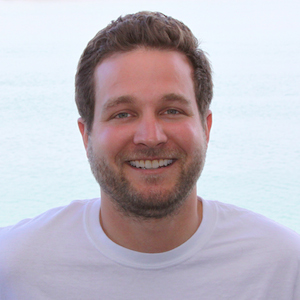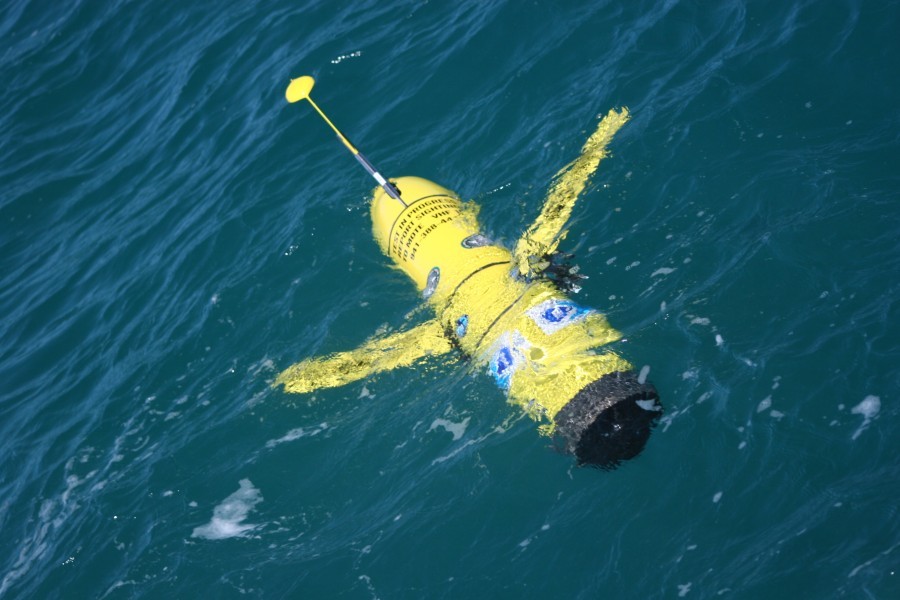Mote welcomes next-gen scientist focused on ocean technology, red tide
 Mote Marine Laboratory is pleased to welcome Dr. Jordon Beckler, a next-generation Ph.D. scientist who will help advance Mote’s innovative Ocean Technology Program and study nutrient cycling in the environment — research essential to understanding Florida red tide.
Mote Marine Laboratory is pleased to welcome Dr. Jordon Beckler, a next-generation Ph.D. scientist who will help advance Mote’s innovative Ocean Technology Program and study nutrient cycling in the environment — research essential to understanding Florida red tide.
Beckler is working with Mote’s ocean-observing technology, including the optical phytoplankton discriminators (aka “BreveBusters”) designed at Mote to detect Florida red-tide algae, Karenia brevis, and the underwater robotic gliders that carry scientific instruments on seagoing missions.
Beckler earned his doctorate in summer 2014 from the Georgia Institute of Technology. There he was part of projects to adapt widely-used lab instruments for their first deployment in the water, expanding scientists’ ability to monitor marine environments more accurately and efficiently.
His doctoral research focused on chemical oceanography, including iron in the environment. Iron is an essential nutrient for many living things in the ocean, but only certain forms of iron are useful for life. Understanding how iron moves and changes in the environment may help scientists better understand the lives of beneficial and harmful marine phytoplankton — tiny plant-like organisms including the red-tide species K. brevis.
Q & A with Beckler:
What got you interested in marine science and ocean technology?
I really love the ocean. I grew up on it, surfing and fishing. I originally went to school for computer engineering, but I switched to environmental science so that I could study hurricanes. I had moved to south Florida two weeks before hurricane Andrew and I was just fascinated by them. And then I took a geochemistry class, and I thought, “This is cool, the water and chemistry — there is so much more there than you could ever imagine.” Then I went out on my first research cruise, and I was sold. There is something about research cruises — the camaraderie you develop being united around a common cause, the travel, and the excitement about not knowing what you will discover. You don’t mind working around the clock.
Why do you want to study iron and red tide?
Waters on the West Florida Shelf are low in nutrients, specifically nitrogen, and we’d typically expect that to limit the growth of Karenia brevis. Iron can have an indirect impact by stimulating another phytoplankton species called Trichodesmium, which can “fix” nitrogen from the atmosphere into a form useful for phytoplankton such as K. brevis. Where the iron might come from is still debated, but I have reason to believe that one source could be the sediments. At Georgia Tech, we studied iron-rich sediments from a swampy “blackwater” river in Georgia, and we found that bioavailable iron could flux out of the sediments and be carried out from the river into the ocean. We have more than a dozen similar blackwater rivers along the West Florida Shelf (e.g. the Peace and Caloosahatchee), so I want to study whether this process is occurring along our coast and what it might mean for Florida red tide.
(Note: The sources of nutrients for Karenia brevis are diverse and complex, and previous studies by others have also suggested iron can be carried into the Gulf of Mexico in dust clouds blown from the Sahara Desert. Studying iron from sediments will add to the “big picture” of possible nutrient sources for red tide.)
How can ocean technology help with red tide?
We can get advanced warnings of red tides using our optical phytoplankton discriminators (“BreveBusters”) in the field — they were designed at Mote by Dr. Gary Kirkpatrick and they help us detect Karenia brevis and about a dozen phytoplankton species. We have our two robotic gliders, or autonomous underwater vehicles, that can move through the water and monitor things like physical and chemical parameters, nutrients and chlorophyll from phytoplankton — allowing us to learn more about conditions which may promote red-tide formation. (See coolcloud.mote.org to learn more about our work with ocean-observing technology.)
Then there’s HPLC (high-performance liquid chromatography) — one of the most popular techniques in all of analytical chemistry. It is the gold standard for some of the work going on here. We bring water samples back to the lab for HPLC to look at brevetoxins (red-tide toxins) and pigments from algae, to identify what species are in the phytoplankton community.
When I was at Georgia Tech, we worked with the company AIS, Inc. to design an HPLC that functions autonomously at sea without human control. If we apply it here, it would be only the third of its kind ever constructed — cool, right? This is one reason why I’m so happy to be at Mote — having another application for our new toy!
Here, we would be using it for new purposes. We could use HPLC out in the ocean to detect brevetoxins in real time to help keep the public safe, and an ultimate goal would be to analyze phytoplankton pigments so we know what the phytoplankton community looks like in real time. I think that would revolutionize the science and be available to benefit other labs around the world. The hard part is, you can’t just run a sample of seawater — in the lab we have to process it to extract the algae pigments. We would have to find a way to do that at sea — sounds like a great idea for a research proposal!
You think ocean technology is good for public education, right?
Ocean Technology at Mote has all these cool resources — it’s the perfect avenue for STEM outreach. (STEM is science, technology, engineering and math.)
Mote has great aquatic robotics summer camps, similar to some outreach I did in Georgia. I really want to incorporate our robotic gliders into fundamental oceanography education, starting with young kids. I’ve been talking with our education program staff here, and we’re looking at developing a glider workshop for teachers for next year, and maybe for students after that!
A few days after I started at Mote, someone from SeaGlide stopped by, and his group had constructed fully functional, miniature gliders out of soda bottles. I think that combing the construction of these miniature robots with real-world experience learning from our full-size gliders will allow students to learn marketable electronics and computer skills, and I hope they’ll be inspired to pursue ocean-related careers.
